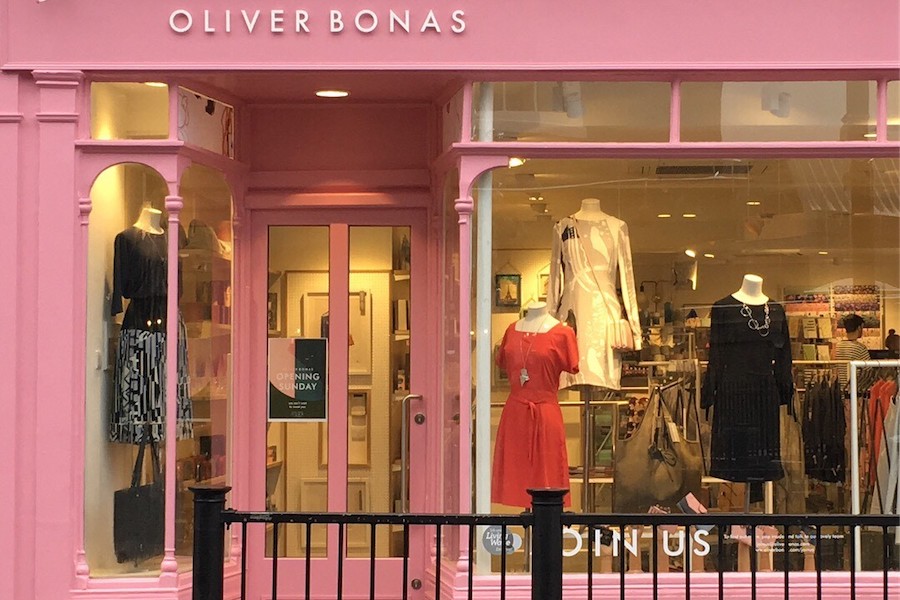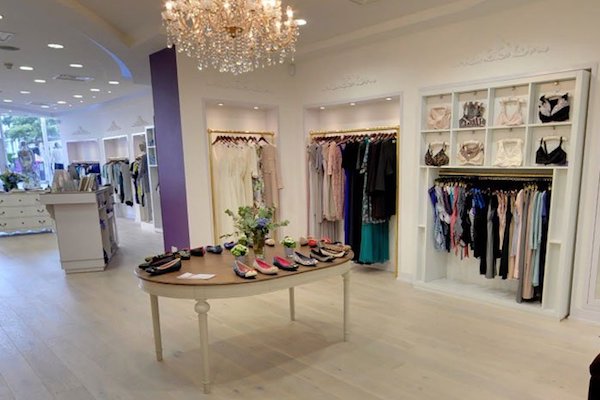People & Team
Article
Catering to modern day shoppers on the high street

Household names are falling in record numbers as brands fail to provide an offering that resonates with modern-day shoppers on the high street. But there is hope, if a different approach is taken.
The high street can be a precarious place to run a business. Catering to unpredictable and fickle modern-day shoppers is a high-stakes game, but there are some independent businesses showing a strong winning hand. Independent British lifestyle store Oliver Bonas is one.
Founded in 1993 by entrepreneur Oliver Tress, the company’s first shop was opened in West London. The business now has 70 stores across the UK, with more than 950 employees. Known for having its finger on the fashion pulse, it is the kind of place you can pick up an alligator trinket pot, a pair of dangly earrings and a colourful summer dress.
The social media-savvy nature of modern-day shoppers is front-of-mind for Oliver Bonas operations director Natasha Sims, who said the company is in the business of “making people happy” by giving them an Instagram-worthy experience in stores. “Our team of designers work hard to create lust-worthy quality products whilst having fun doing it,” she explained. It’s not only the products and store interiors that need to look attractive to modern-day shoppers. Their appetite for excitement and new experiences must also be fed. “We host events and workshops throughout the year to bring the inspiration behind our designs alive,” explained Sims.
The human touch
The retail director also noted that key providing for this type of consumer is to help them visualise what they are buying in its intended environment. “Nothing beats human interaction and the ability to touch and feel the product, which is why we believe stores are still very much relevant, especially for us as a fashion and homeware retailer,” she added. Shoppers need to be able to imagine the products in an intimate space – in their living room, for example – so the Oliver Bonas shop interiors seek to emulate this. It is also important to help shoppers feel at ease. Sims explained that the company’s largest store – the recently opened Liverpool Street train station branch in London – occupies old parts of the original station building, whose worn and weathered brick archway is shown off in-store.

Modern-day shoppers also expect a lot more from customer service, and Sims said the attitude and personality of Oliver Bonas staff are key. “Our assistants have excellent product knowledge, care and passion for helping customers and a genuine love for our brand and products – we don’t have a staff uniform as so many of our sales assistants wear our clothing because they love it,” Sims explained. Spending time with the shop-floor team is also a great way for management to understand what shoppers want from a store. Even more effective is to put yourself in the customer’s shoes, so that you can begin to see what they might need or want. Shoppers in Liverpool Street station, for example, like to have a fast, efficient service – yet have a memorable experience, she said.
“The best way to know what our customers want is by talking to them and our teams on the shop floor,” said Sims, who added that conversations on social media channels also play an important role in giving insight to the needs of modern-day shoppers as is seeing what competitors are doing, attending conferences, and keeping in touch with contacts across the retail industry.
Bricks and clicks
Today’s shopper has also come to expect a high degree of synergy between the high street shop and online store of a brand. “Our online and retail stores support each other,” Sims commented. “Customers sometimes browse online but shop in-store, and vice versa. For example, our stores can drive customers to purchase from our range of furniture. Whatever the journey it is crucial to us that we offer the same customer journey.”
What might the future hold for shoppers? Sims is keeping a “close eye” on virtual technology, artificial intelligence, and using chatbots and virtual assistants in-store. David Williams, COO of maternity wear business Seraphine, which has stores across London and in the United States, agrees that keeping abreast of technology is a must for any high street brand. “Don’t shy away from the internet and other online rivals, instead think about what that technology can do you,” he said.

Seraphine was founded in 2002 in London, has 100 employees and a coterie of celebrity fans, including the Duchess of Cambridge. As Williams explained, its high street stores and the Seraphine website work in tandem, but it is the growing dominance of ecommerce that is driving high street brands to differentiate physical stores by giving modern-day shoppers excellent personal service and the immediate availability of products. The emphasis is on having sales staff who are highly knowledgeable about the products and aware that many shoppers may be embarking on pregnancy and motherhood for the first time. Everything may be new and unfamiliar, so a supportive attitude is a must-have attribute for staff.
Play to your strengths
Williams sees the business as “truly multi-channel”, with an attentive in-store experience reflected in a responsive customer service online, and a website that focuses on range, relevant content, broad product availability and ease of delivery and returns. He plans to bring the two strands of the business closer together over the next couple of years, whilst still maintaining the individual identities of each. High street shops, he believes, can compete successfully with online rivals by focusing on unique advantages, such as personal service, immediate availability and the visibility of being on the high street.
Critical to the success of catering to the modern-day shopper is understanding and predicting their needs. The Seraphine customer, he noted, is a mother-to-be or new mother who wants to remain as fashionable and on-trend during and after her pregnancy as she would be otherwise, and the business seeks to fill that the gap in the market for functional but fashionable maternity wear. “We observe fashion trends in general and then look at how to adapt them to our target market – mums-to-be,” William said. “[The team] often draws from its own experiences of motherhood to create truly unique products. Our 15 years experience helps a lot.”